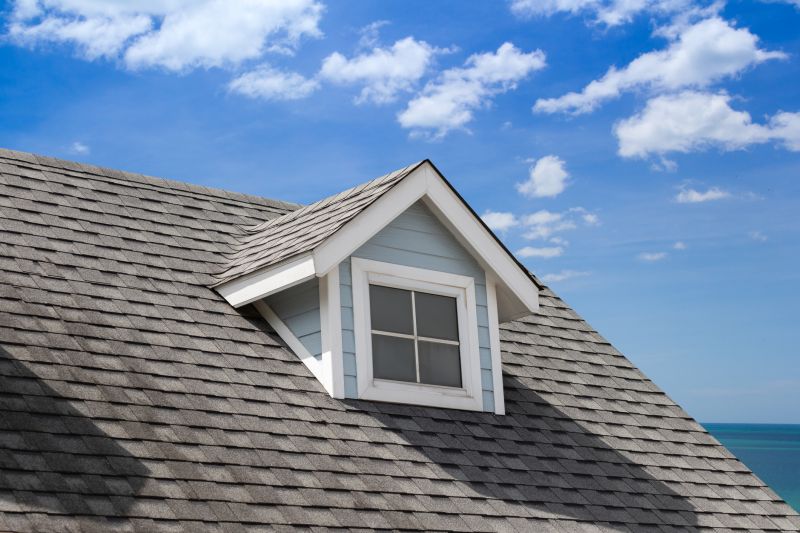Favorite Dormer Leak Repair Items For Quick Fixes
Browse the most popular repair products that allow for fast, efficient sealing of dormer leaks to protect your home from water damage.
 Dormer leaks can pose significant challenges for homeowners, as they may lead to water infiltration, structural damage, and interior mold growth if not addressed promptly. Proper repair involves identifying the source of the leak, which often originates around the flashing, roofing materials, or sealant joints. Selecting the right products is essential to ensure a durable and effective fix. Repair options vary from simple sealants for minor issues to more comprehensive solutions like flashing replacements or waterproof coatings for more extensive damage.
Dormer leaks can pose significant challenges for homeowners, as they may lead to water infiltration, structural damage, and interior mold growth if not addressed promptly. Proper repair involves identifying the source of the leak, which often originates around the flashing, roofing materials, or sealant joints. Selecting the right products is essential to ensure a durable and effective fix. Repair options vary from simple sealants for minor issues to more comprehensive solutions like flashing replacements or waterproof coatings for more extensive damage.
Top Overall Option
All-Purpose Roof Sealant
An all-purpose roof sealant offers a versatile solution for sealing small cracks, gaps around flashing, and joints in dormer areas. It is designed to adhere well to various roofing materials, providing a flexible and weather-resistant barrier. Easy to apply with a caulking gun or brush, this product is suitable for both DIY repairs and professional use. Its durability and ease of use make it a popular choice for maintaining dormer integrity over time.
Types of Products For Dormer Leak Repairs
Roof Sealants and Caulks
Flexible sealants and caulks designed to fill cracks and gaps, providing a waterproof barrier around dormer joints and flashing.
Flashing Repair Kits
Complete kits for repairing or replacing damaged flashing components that prevent water intrusion around dormer windows.
Waterproof Membranes and Coatings
Heavy-duty membranes and coatings that create a waterproof layer over roof surfaces, ideal for extensive leak prevention.
Roof Patches and Repair Tape
Self-adhesive patches and tapes for quick fixes on minor roof penetrations and damaged areas.
Rubber and EPDM Patches
Flexible rubber patches suitable for sealing larger cracks or holes in roofing materials around dormers.
Roofing Cement
Heavy-duty cement used to seal and bond roofing materials, offering a durable solution for various repair needs.
Metal Flashing Sheets
Pre-cut metal sheets for replacing or overlaying damaged flashing components to prevent water entry.
Underlayment Materials
Protective layers installed beneath roofing materials to provide additional water resistance and support.
Roof Vents and Flashing Accessories
Components that improve ventilation and seal around dormer vents, reducing water infiltration risks.
Sealant Applicators and Tools
Specialized tools like caulking guns and brushes to facilitate precise application of repair products.
Popular Choices
A versatile sealant suitable for various roof repairs, including dormer leak sealing, with widespread availability.
Self-adhesive tapes favored for quick and effective minor repairs on roofing surfaces and flashing.
Durable cement used for sealing cracks and bonding roofing materials, often chosen for its reliability.
Complete kits that include flashing materials and tools for repairing or replacing flashing around dormers.
Flexible patches designed for sealing larger cracks or holes, compatible with various roofing surfaces.
Protective coatings that provide an additional water-resistant layer over existing roofing materials.
Essential accessories to improve ventilation and sealing around dormer vents and flashing areas.
Protective layers installed beneath roofing materials to enhance water resistance and durability.
Tools like caulking guns and brushes that facilitate precise application of repair products.
Understanding the different types of products available can help homeowners make informed decisions. Sealants and caulks are commonly used for small cracks and gaps, providing a quick and cost-effective fix. For more substantial repairs, flashing repair kits and waterproof membranes offer added protection and longevity. It is also important to consider weather resistance, compatibility with existing roofing materials, and ease of application when choosing repair products. Proper installation and maintenance can extend the lifespan of your dormer and prevent future leaks.
When selecting repair products, consider the severity of the leak, the age of the roof, and the specific materials involved. Regular inspections and timely repairs can help prevent minor issues from escalating into costly damages. Consulting with roofing professionals or experienced DIYers can provide additional guidance on the best products and techniques for your situation. Remember, using high-quality, appropriate products can make a significant difference in the effectiveness and durability of your dormer leak repairs.
Key Buying Considerations
- Assess the severity and extent of the leak to determine the appropriate repair product.
- Ensure compatibility of the repair product with existing roofing materials such as shingles, wood, or metal.
- Consider weather resistance and durability, especially if repairs are needed in harsh conditions.
- Look for products with good adhesion properties to prevent future detachment or failure.
- Evaluate ease of application, especially if undertaking DIY repairs—some products require specialized tools.
- Check the product’s flexibility to accommodate roof movement and temperature changes.
- Review drying and curing times to plan repair schedules effectively.
- Select waterproof or water-resistant products to ensure long-lasting protection.
- Consider the size and coverage area of the product to match your repair needs.
- Read customer reviews and ratings to gauge real-world performance and satisfaction.
- Verify that the product is suitable for the specific roofing material and structure of your dormer.
- Determine if the product offers UV resistance to prevent degradation from sunlight exposure.
- Assess whether the product is paintable or compatible with other surface treatments if needed.
- Evaluate the cost-effectiveness by comparing coverage, durability, and ease of use.
- Ensure proper safety precautions and ventilation during application, especially for chemical-based products.
This page contains affiliate links. We may earn a commission if you purchase through these links, which helps support our content and recommendations.
